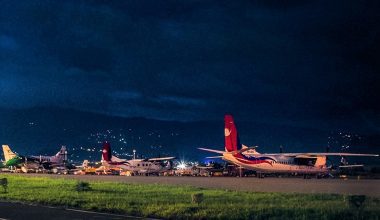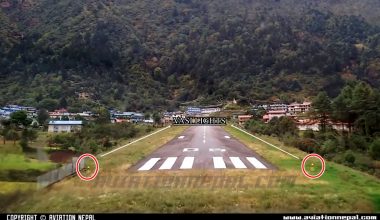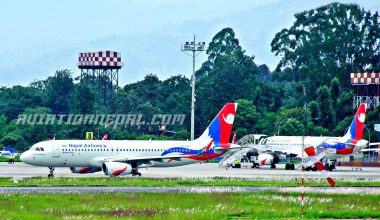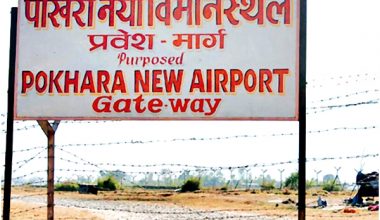-SYANGBOCHE
The highest-altitude airport of Nepal, Syangboche Airport located at an elevation of 12,402 ft in Khumbu Pasang Lhamu Rural Municipality; Solukhumbu District of Nepal has remain closed since the past decade.
The Airport was established 60 years back and has served the village of Namche Bazaar in Solukhumbu district through the 1,312-ft long dirt airstrip at Syangboche. Previously, Nepal Airlines and Tara Air have operated the flight through the airport operating its single-engine Pilatus Porter STOL utility aircraft manufactured in Switzerland.
Since the airport has been in operation for so long, it now has gradually been turning into a grassy field and a forest. The flights were discontinued at the airstrip due to the lack of single-engine aircraft. The Syangboche airstrip is among the world’s highest airports, behind Qamdo Bangda Airport in Tibet (14,219 ft), El Alto International Airport in Bolivia (13,323 ft) and Inca Manco Cápac International Airport in Peru (12,552 ft).
The airport currently will not handle any traffic except for helicopters that started operating here recently to transport goods. The airport runway and facilities have made it isolated with only single engine aircraft to operate through its airstrip.
Previously, on March 18 (four years back), a single-engine aircraft owned by Air Kasthamandap conducted a successful test flight to Syangboche Airport in the Everest region with its New Zealand-built PAC-750XL but the airline could not carry out the commercial flight operation since the Civil Aviation Authority of Nepal (CAAN) said that it would permit aircraft of the “type” for commercial cargo and passenger charter service.
The Captain of PAC-750 XL who conducted the test flight with the New Zealand single-engine aircraft said the airstrip was generally not viewed as safe due to its short take-off and landing (STOL) nature, and it was not advisable to fly aircraft other than the Pilatus.
Aviation Expert’s also say that twin-engine plane cannot land at Syangboche airstrip as the airport itself have made the flight operation isolated due to the limited facilities and short runway, and hence have not been licensed for commercial operations.
If brought into operation, Syangboche airstrip will provide an alternative way out for trekkers who are frequently stranded in Lukla due to bad weather. Trekkers can be rescued to Ramechhap and other areas. “Each year, hundreds of trekkers are trapped in Lukla for days on end due to poor weather, a poor annual ritual. Syangboche will provide a second option to these people. Syanboche Airstrip is a seven-minute flight or a two-day trek from Lukla Airport.






